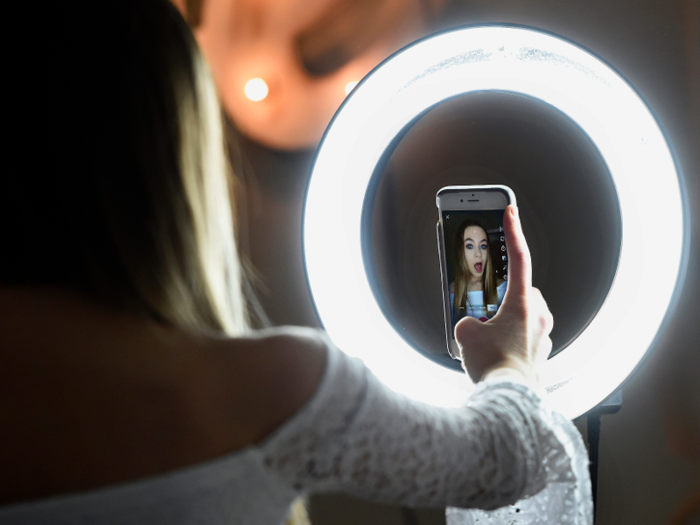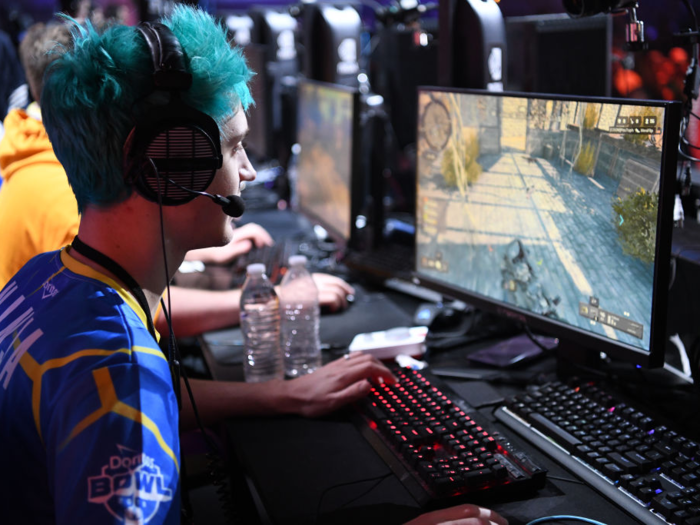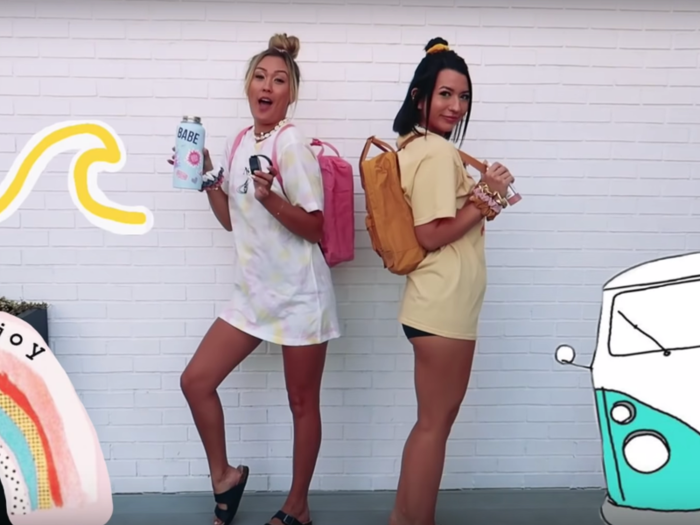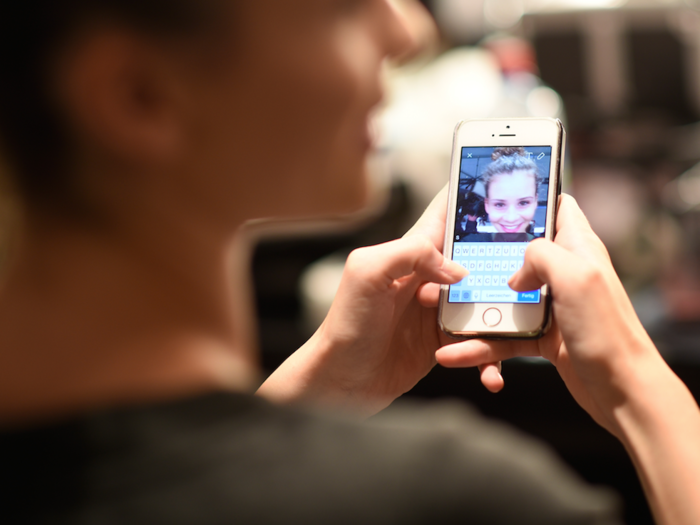- Home
- slideshows
- miscellaneous
- The changing ways teens are using the internet that older people don't understand
The changing ways teens are using the internet that older people don't understand
'Finstas,' or fake Instagrams, allow teens to be more authentic on Instagram to their closest friends.

TikTok is a video-sharing app that teens use to post lip-sync videos and make challenges.

By now you've probably heard of TikTok — but what is it for?
TikTok is a wildly popular video app that allows users to create short-form videos, usually set to music. TikTok resembles the defunct short-form video sharing platform Vine, which hosted comedic video clips (remember this one!) until it shut down in 2016.
Unlike Vine, which capped videos off at six seconds, TikTok allows users to post 15-second video clips — and string together up to four video clips to create a 60-second montage or story.
Sounds simple, right? It is, on the surface. It's the way teens and young people are using TikTok, originally launched as a platform for lip-sync videos, that might confuse older users. One of the most popular ways for teens to engage on TikTok is to participate in challenges. Users will post videos of themselves attempting to do the same activity or recreate the same video, but with their own twist.
The way that a trend, or meme, forms and gains traction on TikTok isn't a hard science, but once a trend has been established, it catches on quickly. A recent trend finds users dancing to, inexplicably, the soundtrack of old voicemails. TikTok is, in short, a microcosm of the internet itself — mercurial, fast-moving, and often utterly incomprehensible to those not well-versed in its inner workings.
Though the shelf life of TikTok's popular trends and challenges are fleeting, the fame achieved by some of its most popular users has proved to be lasting. Like YouTube, TikTok has its own crop of celebrities, who have translated their massive following into cash returns.
Twitch is a streaming platform that allows gamers to broadcast gaming sessions to millions of viewers.

For many people, sitting and passively watching someone else play video games sounds like a dreadfully boring way to spend an afternoon. And yet, therein lies the entire premise of Twitch.
The video-streaming platform evolved from a website launched in 2007 called Justin.tv, which was essentially a single channel featuring founder Justin Kan going about his normal life — and broadcasting it to viewers 24/7. When it launched in 2011, Twitch positioned itself as a live-broadcasting platform on which users could log on and watch streamers play video games in real time.
Since then, the platforms popularity has soared, with Twitch users logging more than 355 million minutes of stream-viewing in 2017.
The platform has broadened its scope to include all manner of livestreams, from board games to music. Like similar video platforms, Twitch has its own set of celebrities who have figured out how to monetize the platform. One of Twitch's biggest stars is Ninja, who once streamed a Fortnite gaming sessions with Drake, Travis Scott, and Pittsburgh Steelers wide receiver JuJu Smith-Schuster. What a time to be alive.
VSCO girls are social media-savvy teen girls with cultivated aesthetics and social awareness.

VSCO girl — that's pronounced "visco" — is a term that originally was used simply to describe a girl who uses the editing app VSCO to edit her photos and videos. The term VSCO girl, however, has since evolved to describe a very particular type of teen girl.
VSCO girls are "the evolution of the 'basic b----' millennial that took the internet by storm five years ago," as Business Insider's Hillary Hoffower wrote.
"VSCO girls have just traded in pumpkin-spiced lattes for Hydro Flask water bottles, Ugg boots for Birkenstocks, and North Face jackets for oversized tees," Hoffower wrote. "They also love puka-shell chokers, Pura Vida bracelets, and Fjallraven backpacks."
But VSCO girls are about more than a certain style. Their personalities are defined by the world they inhabit — specifically their reactions to the world. VSCO girls are eco-friendly and decidedly "woke." They are dedicated to a kind of performative wokeness, which has evolved into a kind of winking in-joke found in self-effacing "VSCO girl POVS" posted to TikTok.
Teens are able to hide their internet activity with encrypted and fake apps.

Since the dawn of time, teens have dedicated themselves to finding new and inventive ways to outsmart their parents. And since the dawn of the internet, their devices have become far trickier — especially for would-be parental watchdogs who are far less digitally savvy.
"Teenagers are using 'fake apps' and 'encrypted apps' to hide and password protect their photos, videos and text messages," said Gunjan Sharma, cofounder of home internet security company Hoinse.
Sharma points to Best Secret Folder as an example. The free app is designed to keep photos and other sensitive content from being accessed by anyone other than the user. The icon is deceptively designed to look like an iOS folder — all the better to throw prying parents off the trail. And if someone other than the user does try to access the folder, the app captures photo of the 'intruder' and records their location.
Today's teens 'stan' celebrities who they're obsessed with.

The slang term "stan" has been around for a few years now, but it doesn't seem to be losing any steam on the Internet, particularly on platforms like Twitter. (If it makes you feel any better, even reigning queen of Twitter Chrissy Teigen had some growing pains while learning to use it.)
A "stan" is a term used to describe an avid, overzealous fan. "To stan" then, means to be a fan of someone or something to the point of obsession. The word comes from an Eminem song about a superfan named — you guessed it — Stan, who takes his fandom of the rapper disturbingly far. Some interpret the word to be a portmanteau of "stalker" and "fan."
You can stan or be a stan of anyone or anything, though it's almost always used in the context of pop culture icons.
Teens have streamlined communication to catchphrases and pictures with memes.

If there's one way that young people use the internet differently than generations past, it's that they can hold entire conversations using memes. Some memes burn bright and die quickly, like "Damn Daniel or "Salt Bae," and some prove to have staying power. "And it shows" is one of the latter.
This is likely due to the meme's simple but easily adaptable format: "Some of you were never ___, and it shows."
The meme format became popular on Twitter in early 2019 and has continued to gain traction on Instagram and other platforms. While the meme is always comedic in content, it's usually used to speak to or contextualize a larger cultural issue or provide witty commentary on a universal theme or topic that is relevant to a specific demographic. Often, the meme is nostalgic in nature.
The meme can speak to everything from socioeconomic politics ("Some of you all never had a furnished basement and it shows"), to people's upbringings ("Some of ur parents let y'all buy whatever u wanted at the scholastic book fair and it shows").
Whatever the topic, there's probably a meme for it.
Popular Right Now
Popular Keywords
Advertisement